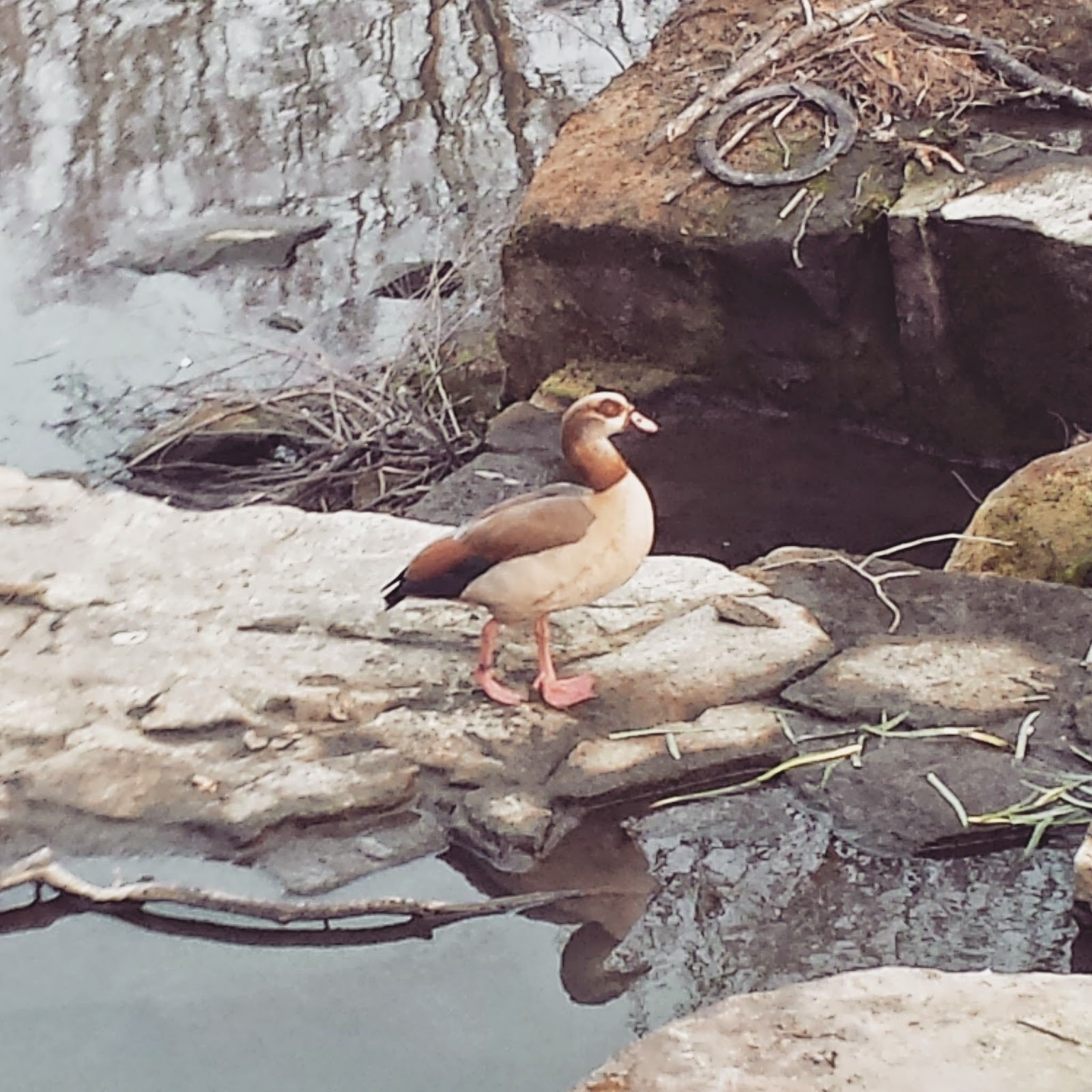Ask my family to describe my personality in 5 words and one they might come up with is obsessive. When I get something into my head it is often all I can think about. At the moment that's birdsong! I am hoping for a career in ecology once I have completed my Master's degree and species identification is an important field skill to have, combine that with my obsessive nature and you get the current state of play, annoying Inna with recordings of bird song and stopping to I.D. every call I hear.
I'm lucky enough to have free Friday afternoons on my current timetable and spent some time this afternoon in Dulwich Wood. The woodland is privately owned by the Dulwich estate and is what remains of a once large mixed woodland covering much of what is now South London. It is an amazing place, you can completely forget you are in the city once you step inside.
 |
| Dulwich Wood - prettier that the entrance suggests |
I found myself a quiet corner and spent 30 minutes listening and looking. This is a breakdown of what I was able to I.D. (click on the links to hear their calls)
Chiffchaff - once you have learned this little fella's call it is instantly recognisable. It is a series of little 'zips' and 'zaps' in almost perfect 1-2-3 time. You could waltz to it! They look VERY similar to Willow Warblers and you can only really differentiate them by their call.
Blue tit - one of my favourites, a loud 'meep' followed by rapid little couplets for about 3 seconds. Today's was a bit shy and was cutting his song short, not sure what that means in terms of behaviour. Their cackling call is also very distinct.
Great tit - imagine a squeeky bicycle pump and you are not far off. They add happy little backing vocals to the noisier Robins and Blackbirds.
Chaffinch - another beauty, rapidly descending trills finishing with a flourish.
Blackbird - a melodic warble, again with a flourish at the end. One of the most common songs you will hear.
Ring necked parakeet - not pretty, in fact a bloody racket. Nice to look at though...
Robin - if the Chiffchaff is a stickler for keeping in time the Robin is more free-form jazz. Melodic and lyrical, once you've got it pegged it is one you'll hear a lot of. Their little 'tic-tic-tic' call is very reptilian.
Song Thrush - masters of improvisation. Individuals have up to '100' different phrases and will repeat them in little groups of 3-5. The song carries a long way. Another favourite.
Wood pigeon - the baritone section!
Jay - you'll hear him more than you see him. A favourite of mine, just not to listen to.
Add to this various other subtle calls and songs which I am not yet talented enough to identify and you have got a diverse little spot.
The Greater London National Park is a movement aiming to make one of the most bio diverse Urban environments in the UK a recognised national park, not a bad idea if you ask me.
 |
| Dulwich Wood Panorama - one of my favourite spots in London |











